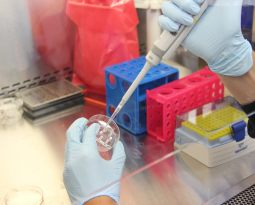How a Permanent R&D Tax Credit Is An Advantage for You…
 In the lead up to Christmas joy is often sensed around the nation in the form of Christmas carols, gift giving, and of course, obligatory ‘taste testing’ of gingerbread men. However, this holiday season thanks to congress, joy was also felt by tax payers. On December 18th 2015, the US congress provided the ultimate holiday tax gift in the form of the permanent tax breaks. Most notably, for the first time in history, the federal R&D tax credit was made permanent. Thus, prompting the question, how does a permanent R&D Tax Credit impact the nation?
In the lead up to Christmas joy is often sensed around the nation in the form of Christmas carols, gift giving, and of course, obligatory ‘taste testing’ of gingerbread men. However, this holiday season thanks to congress, joy was also felt by tax payers. On December 18th 2015, the US congress provided the ultimate holiday tax gift in the form of the permanent tax breaks. Most notably, for the first time in history, the federal R&D tax credit was made permanent. Thus, prompting the question, how does a permanent R&D Tax Credit impact the nation?
To begin with, a permanent R&D tax credit allows US businesses to confidently invest in research and development without having to worry about whether Congress will extend the credit. Previously, the on-again, off-again nature of the credit influenced future R&D budgets, planning and investment decisions. Now, businesses may self-assuredly invest in an R&D project without fear of being audited.
Without a doubt, R&D plays a critical role in the economic growth of a country, essentially spurring the innovation and increased productivity necessary for a strong U.S. economy. Moreover, when R&D is undertaken in the United States, domestic jobs of workers performing research activities are maintained and increased. For every large company performing R&D in the United States, there are many small and medium-sized manufacturers in the supply chain who have employees performing R&D used by their larger customers. In fact, 70 percent of credit dollars are used to pay salaries of high-skilled R&D workers. Furthermore, a recent study on tax reform finds that a strengthened, permanent R&D incentive would increase employment by over 36,000 jobs per year and contribute to annual increases in GDP and investment.
Indeed, a permanent R&D tax credit fuels innovation which translates into new product development, job creation and increased productivity—three key factors necessary for growth in a global environment. Hence, as the R&D tax credit becomes permanent legislation, businesses around the nation should be taking advantage of the benefits of R&D. Moreover, aside from permanency, the PATH Act includes that certain companies—startups that are less than five years old with less than $5 million in annual revenue—will now be able to apply up to $250,000 in R&D expenses against their payroll tax liability. Consequently, expanding the reach of the R&D Tax Credit to smaller companies.
Overall, Swanson Reed believes the permanent R&D tax credit will advantage our clients by providing a reliable funding source. Contact us today if you would like to learn more about the R&D Tax Credit. In the meantime, and in light of the permanent credit, we would like to wish everyone a happy holidays!
















